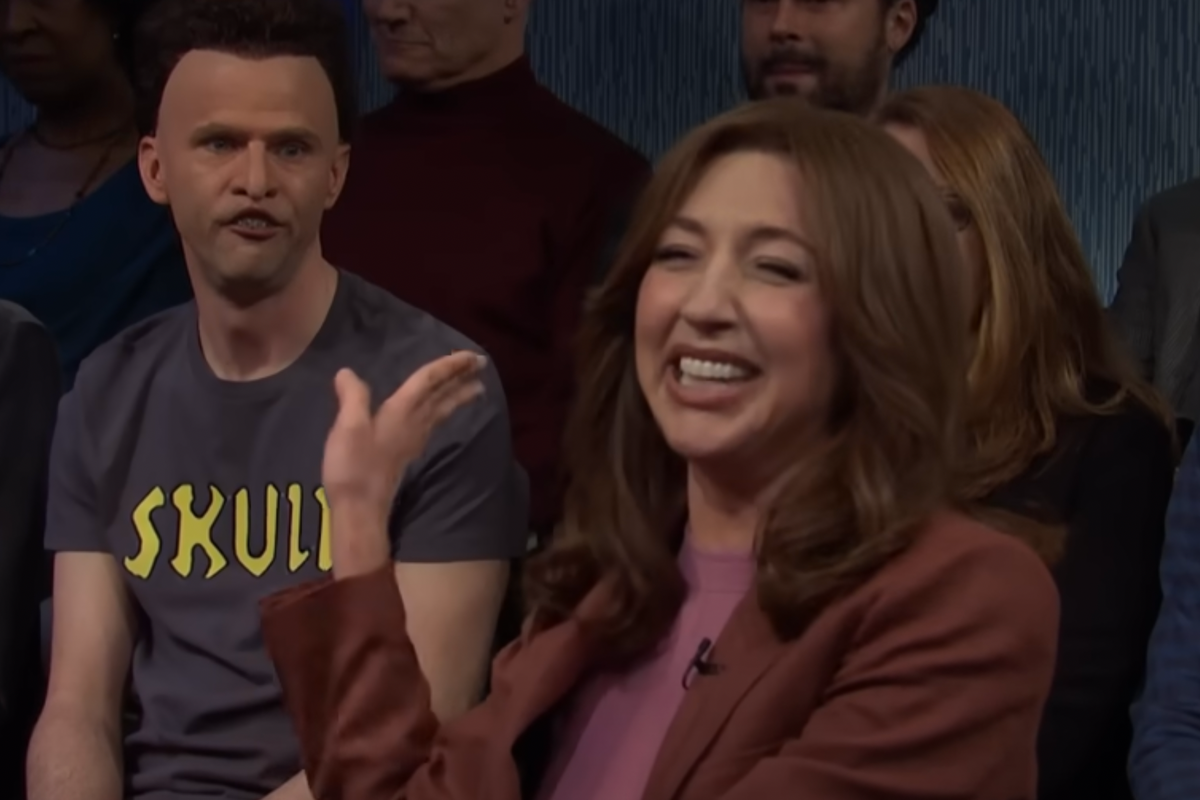Characters can't help but crack up during hilarious 'Beavis and Butt-Head' sketch on 'SNL'
Kudos to them for trying their best to keep it together.

Honeslty, who could blame them for breaking?
Though the performers on “Saturday Night Live” are complete pros when it comes to not breaking character, the moments when they do finally lose often make the sketch infinitely funnier. Just ask Bill Hader.
That was certainly the case during the April 11 episode, where host Ryan Gosling and Mikey Day transformed into human versions of “Beavis and Butt-Head.” Or, more accurately, two regular guys who happened to look like the iconic cartoon characters. Like, to an insane degree.
The scene centers around a talk show called “News Nation,” where journalist Hieid Garnder interviews a professor (Played by Kenan Thompson) about the ethical limitations of AI. Only what should be a very serious conversation is completely thwarted as Thompson can’t look away from an audience member (Gosling) donning a blue "Death Rock" T-shirt, prosthetic nose and platinum blonde pompadour.
"Professor, is there a problem?" the journalist asks.
"Um, yeah. There is a gentleman in your audience who looks strikingly similar to Beavis, from the cartoon ‘Beavis and Butt-Head’," the professor responds. "Just a little distracting."
That’s when Gardner turns around and, judging from her surprised stifled chuckle, sees the crazy realistic looking prosthetic Gosling is wearing for the first time.
Though Gosling’s character assured everyone he had no idea what “Beavis and Butthead” was, he politely agreed to move seats. Of course, he was immediately replaced by Day, just another innocent dude…who looked exactly like Butt-Head come to life. At this point Gardner lost it.
“Sir,” she says before busting out into a fit of laughter.
Eventually both Day and Godling end up sitting next to each other. And no one, save Thompson and the stone faced audience, can keep it together. And kudos to them, it couldn't have been easy.
Watch below. And if you’re a “King of the Hill” fan, definitely watch til the end:





 Side Eye Dog Meme GIF
Side Eye Dog Meme GIF Meme Reaction GIF by Tokkingheads
Meme Reaction GIF by Tokkingheads Rihanna Nails GIF
Rihanna Nails GIF When the parents don't even know about it, that's a successful surprise party.
When the parents don't even know about it, that's a successful surprise party.